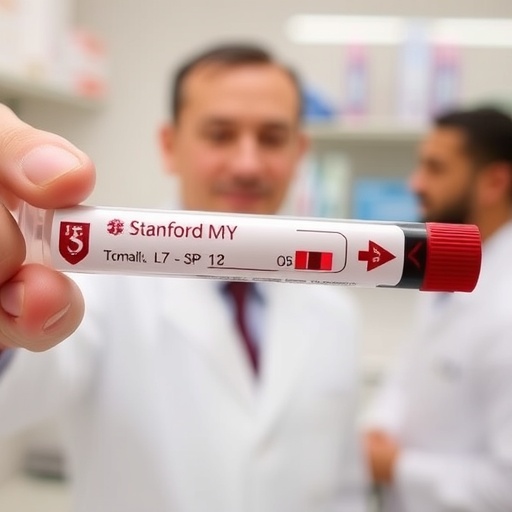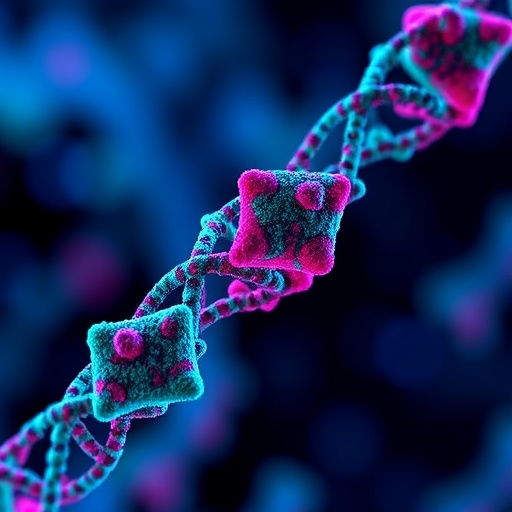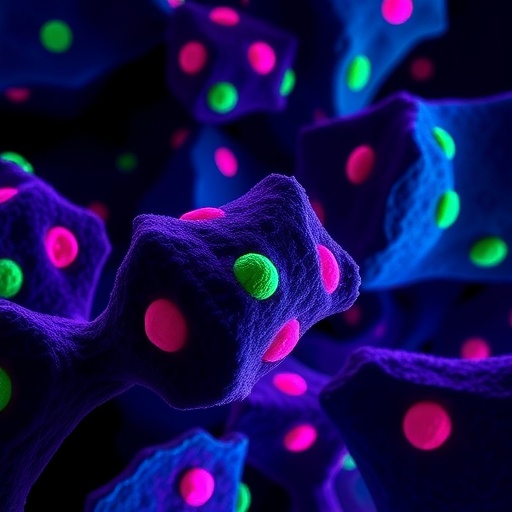Stanford Medicine scientists have unveiled a groundbreaking blood test that can not only detect cancers at various stages but also uncover mechanisms behind treatment resistance and identify tissue damage from non-cancerous conditions. This innovative test centers on the analysis of a rarely studied fragment in the bloodstream known as cell-free RNA, particularly messenger RNA (mRNA), which offers a dynamic window into cellular activity throughout the body.
Unlike DNA, which has traditionally been the main focus of liquid biopsies, this new approach deciphers mRNA fragments that circulate freely in the bloodstream after cells die. Such RNA molecules carry precise information about which genes are actively being expressed as proteins, providing a much-needed molecular snapshot of real-time biological states. The sheer rarity and fragility of cell-free mRNA—with most circulating RNA being ribosomal RNA—presented formidable challenges that researchers at Stanford worked tirelessly to overcome over six years of meticulous study and technological development.
Central to their breakthrough was an advanced molecular and computational technique to isolate mRNA signals obscured by the overwhelming presence of platelets. These small blood components contain RNA that could easily mask cancer-specific or tissue injury-derived mRNA signatures. By mathematically subtracting platelet contamination, the team enabled their method to operate robustly on both fresh and archived blood samples—unlocking the potential to retrospectively analyze hundreds of samples stored from completed clinical trials to uncover predictive molecular markers without the need for additional invasive procedures.
The team strategically narrowed their focus to a subset of approximately 5,000 “rare abundance” genes—mRNA transcripts generally absent in the blood of healthy individuals. Concentrating on this specific genetic subset magnified the test’s diagnostic sensitivity by more than 50-fold. Impressively, the test detected lung cancer signals in nearly three-quarters of lung cancer patients, including those whose disease had not yet progressed to advanced stages, demonstrating its potential utility as an early detection tool.
Remarkably, this mRNA-based liquid biopsy can detect cancer treatment resistance mechanisms that do not involve genetic mutations—the usual targets of DNA-based assays. Resistance to therapies often arises from cellular changes that modify gene expression and cell behavior rather than through DNA sequence alterations. This capability enables clinicians to identify non-genetic resistance early, ideally before imaging scans reveal progressing disease or symptoms worsen. The promise here is a critical window to adjust therapies proactively, potentially improving clinical outcomes for many patients.
Beyond oncology, the cell-free RNA assay also offers valuable insights into acute tissue injury. The test measured elevated levels of normal lung-derived mRNA in patients suffering from acute respiratory distress syndrome (ARDS) requiring ventilator support—a severe condition characterized by substantial lung cell death. The intensity of lung mRNA signals closely mirrored disease severity in COVID-19 patients, thus proposing a novel biomarker to track lung injury dynamics non-invasively.
Additionally, traces of lung RNA were identified in healthy smokers, suggesting subtle, microscopic lung damage triggered by tobacco exposure. This finding carries significant weight as it implies the test could detect early signs of chronic tissue injury well before conventional clinical symptoms or imaging abnormalities arise, opening avenues for preventive interventions.
Such versatility and depth of cellular insight underscore how cell-free mRNA analysis can revolutionize personalized medicine. By providing a minimally invasive, sensitive, and repeatable method for monitoring molecular changes, this technology complements and extends the capabilities of DNA-based liquid biopsies. It ushers in a new era where molecular monitoring evolves from static snapshots to dynamic storytelling of tissue health, disease progression, and treatment response.
The study was spearheaded by co-lead authors Dr. Maximilian Diehn and Dr. Ash Alizadeh, whose collaborative expertise in radiation oncology, oncology, and hematology guided the project through its nuanced technical challenges. Their work, published in the prestigious journal Nature on April 16, 2025, involved a multi-institutional team including contributors from Massachusetts General Hospital, Harvard Medical School, Memorial Sloan Kettering Cancer Center, Fred Hutchinson Cancer Center, and the University of Washington.
This extensive research effort was supported by grants from the National Institutes of Health and various cancer research foundations, highlighting the broad scientific and clinical significance of this novel approach. The Stanford team’s collective efforts culminated in an ultrasensitive methodology that broadens the scope of liquid biopsies, making them more inclusive of molecular phenomena beyond genetic mutations alone.
Scientists envision that future applications of cell-free mRNA testing may range from stratifying patients in clinical trials to real-time monitoring in clinical practice, enabling oncologists to make informed decisions faster than ever before. Moreover, its utility in detecting cellular injury in conditions like ARDS or chronic lung disease invites exploration into other non-cancer pathologies where tissue health is critically compromised.
By unlocking the molecular messages embedded in fleeting RNA fragments circulating in the blood, this technology paves the way for earlier diagnoses, better predictions of therapy resistance, and tailored therapeutic regimens that respond adaptively to the biology of each patient’s disease. It redefines the liquid biopsy as not merely a diagnostic tool but a dynamic molecular compass guiding precision medicine into the future.
Subject of Research: Human tissue samples
Article Title: An ultrasensitive method for detection of cell-free RNA
News Publication Date: 16-Apr-2025
Web References: https://www.nature.com/articles/s41586-025-08834-1
References: DOI 10.1038/s41586-025-08834-1
Keywords: Biomarkers, Cancer cells
Tags: advanced molecular techniques in diagnosticscell-free RNA analysisdynamic cellular activity monitoringinnovative cancer detection methodsisolation of mRNA signalsmRNA in liquid biopsiesnon-cancerous condition indicatorsovercoming platelet contamination in blood testsRNA blood test for cancer detectionRNA-based molecular snapshotsStanford Medicine research breakthroughtreatment resistance mechanisms





